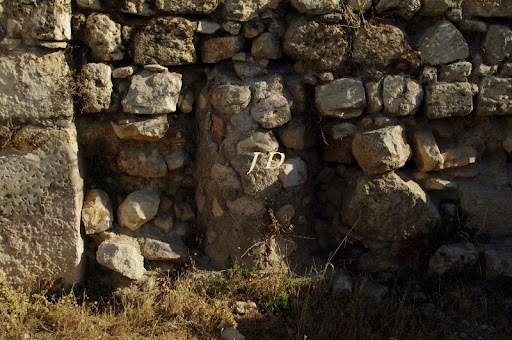This palace was built in the first half of the eighth century, during the reign of Hisham ibn Abd al-Malik (724-743), and the construction requirements were: stone, mortar, and architectural decoration: engraved plaster, mosaic, and the total area: 21,000 m2.
This huge building was used as a palace, and at the same time the residence of the prince or ruler and the seat of government in this part of the Umayyad dynasty.
In front of the palace there was a mosque whose preserved elements still simulate the facade of the only hall of the palace that is still standing.
And the construction process is usually based on the reuse of old materials: huge stones and columns, a widespread matter in the Middle Ages, whether it was in the Islamic world or in castles and churches in the Western world.
The Umayyad Palace of Amman is also distinguished from the rest of the “desert palaces” by being influenced by Persian culture, especially the two intersecting halls under a dome, each of which is preceded by an iwan. Only one of the two iwans remains today.
The two halls were standing in the far north of the palace, and the first was for the public office and the second for the private office.
In the cross-room, which is still preserved, we find clear influences from Sassanian art as well as in the semi-circular arches and also in the corners of the domes, some of which are decorated with stucco decoration .. such as small columns without bases and arches in the shape of sawtooths, similar to them in the Harrana Palace in the Jordanian desert.
The Umayyad Palace, in terms of its combination of Western and Eastern traditions, is a cornerstone of the new combination of decorative elements and building techniques and a connecting point between...
Read moreThe Umayyad Palace within the Amman Citadel is a captivating testament to the architectural brilliance and historical richness of Jordan's past. Nestled amid the ancient ruins, this remarkable structure stands as a poignant reminder of the Umayyad dynasty's influence in the region.
The palace's layout, adorned with intricately designed columns and arches, offers a glimpse into the opulence and sophistication of Umayyad architecture. Walking through its corridors and courtyards, one can almost feel the echoes of a bygone era, imagining the palace's former grandeur.
What sets the Umayyad Palace apart is not just its architectural allure but also its historical significance. The inscriptions and remnants within the palace tell stories of a vibrant past, providing a fascinating insight into the cultural and political life of that era.
The panoramic views from the palace grounds are awe-inspiring, offering vistas of Amman's cityscape that beautifully blend the ancient with the modern. The preservation efforts are commendable, allowing visitors to appreciate the intricate details and historical context preserved within this archaeological gem.
Exploring the Umayyad Palace is an immersive journey into Jordan's rich heritage, offering visitors a chance to connect with a pivotal period in the region's history. Its location within the Amman Citadel, along with the surrounding archaeological sites, makes it an integral part of any visit to Amman, leaving visitors with a profound appreciation for Jordan's...
Read moreYears ago, it became one of the most beautiful scenes for viewers standing in the regions and mountains of Oman Overlooking the archaeological Mount Amman Citadel - is the view of the huge lead-coloured dome located above The roof of this Qasra Almoay in Amman, which was built about ten years ago or more. And near this archaeological palace in the Citadel Mountain, cultural events and cultural activities began to take place Such as music concerts and folk festivals. The Umayyad Palace on the Citadel Mountain is considered one of the oldest Islamic monuments in Amman. The Umayyad Palace, or what was known as “the House of the Emirate” in the Umayyad era, is located on the northern side. Western of Mount Citadel and north of the Temple of Hercules. Its construction dates back to the Umayyad period (720...
Read more
